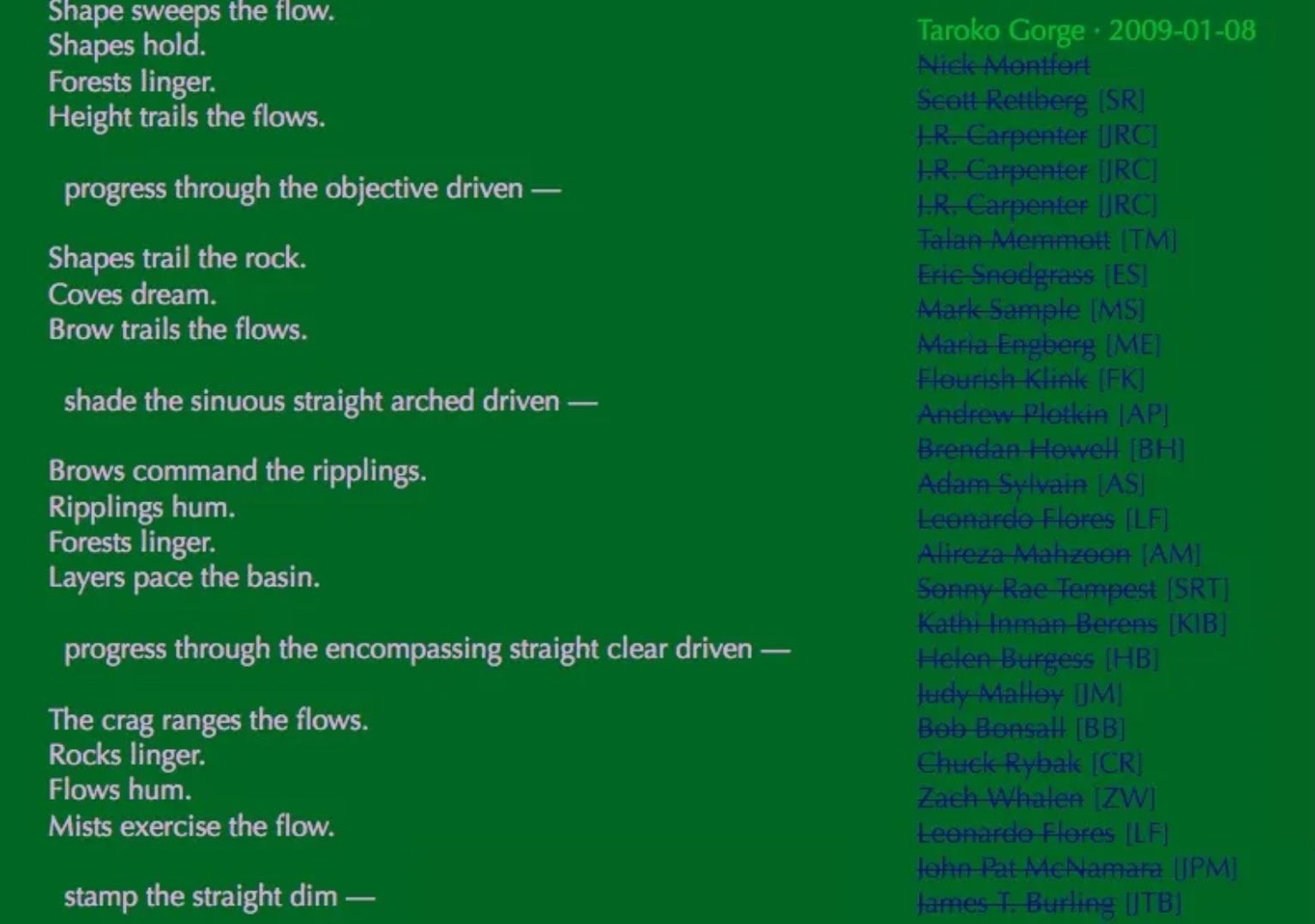Written by: Toriana Grooms
This semester, I am taking English 2614: Writing with Algorithms with Professor Kyle Booten, a course to learn basic coding skills to program computer-generated literature. Given the current fight between artificial intelligence and the art community, this course looks like a paradox. Not to mention, the standard CLAS student’s worst nightmare. (The first thing people say when they hear I’m taking this course is: “Aren’t you an English major? Aren’t you terrible at computer science?” Yes.) Nevertheless, Professor Booten does a great job in breaking down simple Python programming, while also indirectly raising the underlying philosophical question: what is art?
In class, we discussed and attempted to create coded poems similar to Nick Montford’s “Taroko Gorge.” This algorithmic poem was meant to describe Montford’s experience at Taroko Gorge National Park in Taiwan by using Python, a word bank, sentence structure options, and a desired randomness, so words like “monkey” can pop up every so often in this forest imagery. Every second, a new line of poetry is added, with many sentences reusing the same formatting and prepicked grammatical structure. The class was then asked to compare this poem (and by extension all computer-generated poems) to a poem entirely written by ChatGPT, given the prompt: “write a nature poem.” ChatGPT gave back a poem in a Robert Frost structure about an unspecified forest with elaborate metaphors and personification.
What makes [x] poem better?
The ChatGPT poem was “well-written.” It was a short and sweet poem about the wild, and on a technical level, it was the kind of poem you could read to a stranger that would be acknowledged as “good poetry.” (Though it is up for debate if the poem was well written because it plagiarized sentence structure and phrasing from artists like Robert Frost.) Contrastingly, Montford’s poem is choppier and redundant, the algorithm creates a never-ending poem constantly generating new lines that are scrambled reorganizations of recycled vocabulary. Many of the sentences created don’t even make complete sense because they are a random combination of nouns, verbs, prepositions, etc. that a sentence generator pieces together. However, these were conscious decisions someone made to describe their experience at Taroko Gorge, a quirk that enhances the text’s humanistic beauty. That said, were Montford’s decisions even deliberate if a computer was using his algorithms to create the sentences? Similar to AI models, each sentence lacks that hint of intentionality when customized by computer generated randomness.
On the spectrum of…
using a computer to type our thoughts
to
programming algorithms to make a text
to
prompting ChatGPT to write an essay…
Where is the line where artistry ends?
Must true art always be tied to a human experience?
Featured Image Caption: Screenshot of an AI-generated poem

